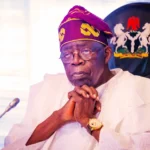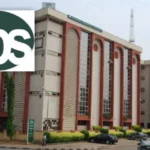The Nigerian Electricity Market (NEM) is indebted by at least N150billion to generations companies (GenCos) built under the National Integrated Power Projects (NIPP), just as GenCos have the cheapest tariff among the about 24 gas-fired power plants on the national grid.
According to an operational report obtained by Daily Trust on Sunday, there are 10 NIPP GenCos operated by the Niger Delta Power Holding Company (NDPHC), with eight of them active.
Alleged negligence: CSOs, media, lawyers seek justice for deceased woman
Needed growth in economic and agricultural sector
In the latest operational report, officials stated, “The NDPHC is Nigeria’s power industry backbone. The company is owed about N150bn by the system but it is still standing. The company’s power is the cheapest per kilowatt among thermal producers; hydropower is the cheapest.
“Despite this low price, the NCC still gives it least priority when buying power, and it is the first to be asked to disengage.”
The managing director of the NDPHC, Mr Chiedu Ugbo stated in the report, “I am managing generation assets. I have a tariff that is 28 per cent lower than my peers, meaning that I am subsidizing the sector by 28 per cent.
“We have met the regulator a number of times on this to say that the government has to take a decision on whether we are a social company or a business entity because if they increase our tariff, it will lead to overall increase in revenue, judging by the capacity of 4,000 megawatts we have.
“Again, I have over 3,500MW capacity, but I am told to supply only 700MW, and it is on that that I get paid. Now, DisCos remit about 50 per cent. It means that I get paid 50 per cent. Right now, what is owed the NDPHC by the industry is somewhere around N150bn. Which company survives with that level of debt?”

Recently, the Bureau of Public Enterprises (BPE) announced ongoing plans to privatise the five most active NIPP GenCos and has already pre-qualified 16 firms for that. The five NIPP plants comprise Geregu, Omotosho, Olorunsogo, Odukpani and Benin-Ihovbor GenCos.
However, stakeholders in the power sector have kicked against this, noting that more priority should be given to their operations, and their assets optimised to crash the currently skyrocketing electricity tariff.
The president of the Nigeria Consumer Protection Network (NCPN), Kunle Olubiyo, told our reporter that since the NIPP plants had the cheapest tariff among the gas-fired power plants, the System Operator, a segment of the Transmission Company of Nigeria (TCN), should optimise the dispatch of power from them to the national grid to provide cheaper tariff for power consumers.
While Olubiyo insisted that some of the new firms bidding for the plants do not have any power sector experience, he said, “NIPP plants have always been the infrastructure that provides power supply and national energy security.”
Corroborating the power consumer advocate’s submission, the latest NDPHC operational report shows that the NDPHC, being the parent company of NIPP plants, is responsible for the provision of at least 50 per cent of transmission and distribution infrastructure in the country.
While the NIPP plants contribute over 3,500 megawatts of electricity to the national grid, the NDPHC delivered 22 substations between 2015 and 2021. Also, from 2015 to 2019, the NDPC completed 2,194 kilometres of 330 kilovolt (kV) and 887km 132kV transmission lines respectively.
Also, the country now has 10 new 330/132kv substations and eight 132/33kv substations connected to the national grid. These have added 5,590MVA/330kv and 3,493MVA/132kv capacity levels respectively.
From June 2019 to January 2021, NDPHC’s transmission department completed four new substations, including Awka, Nkalagu, Ihiala and Orlu substations.
For electricity distribution, the NIPP has completed over 360 injection substations with a combined capacity of about 3,540MW. It has also built about 2,600km of 11kV power distribution lines and 4,600km of 33kv distribution lines, which directly supply electricity to transformers in residential areas.
There have also been 296 Appropriated Distribution Projects, which included injection substations, 1,924 of 33kv lines, 4,600km of 11kv line and other infrastructure.
The company has also increased its distribution capacity with the installation of 25,900 Completely Self-Protected (CSP) transformers across the country.
In spite of these efforts, the officials said the company was still faced with electricity market challenges that include delay in valuing its assets.
“Many years later, neither the TCN nor any of the DisCos has paid for the facilities already handed over to them, from which they are generating income. Despite its strategic importance, there is no single Take or Pay contract like the government has with some other generation companies.
“The NDPHC is not also paid a dime to compensate for its spinning reserve to compensate for gas and other expenses going into maintaining its turbines when power is not being taken,” it noted.
However, the company, jointly owned by the federal, state and local governments, has edged on and contributes daily to power generation.
Commenting on this, the managing director of the NDPHC, Mr Chiedu Ugbo said, “Despite all these, the company has continued to run efficiently without once returning to treasury for bailout since the initial seed capital was provided.”
Further explaining the portfolio of the company, Ugbo explained that “NDPHC was providing interventions in power transmission across the country.
“President Muhammadu Buhari, earlier this year, commissioned the Lafia transmission substation. In 2021, we commissioned a 2×60 megawatts substation in Awka to improve transmission capacity by about 100MW. We did a similar project in Abeokuta and Akwa Ibom State.”
He, however, gave assurance that the problems with the electricity sector would soon be resolved with the various interventions.
NDPHC plans for renewable energy
According to the NDPHC report, the company has implemented over 20,000 units of Solar Home System (SHS) and has plans to generate power from hydropower dams in what could be termed as its second phase of power generation project after it completed the ‘Big Ten’ GenCos in Kogi State and the Niger Delta region.
Mr Ugbo had announced partnership with the Federal Ministry of Water Resources to develop small and medium hydropower projects. He said, “In renewable energy, we are working on solar, not just a stand-alone but also mini-grid and on utility scale, that is on one side. We also thought that part of the programme is hydroelectric and the best way to start it is the dams.”
The Minister of Water Resources, Suleiman Adamu, an engineer, at a visit of the the NDPHC team, noted that Nigeria had over 240 dams with most having the capacity for hydropower, adding that the dams have the capacity from 40MW and below.
Adamu said most of the projects had been halted because of poor planning, as he sought the intervention of the NDPHC.
However, for the company to intervene, it will require that most of its assets are valued so it can earn marginal returns on the investments and then re-invest that into these core need areas.
Experts urge recouping of NIPP investments
Some power sector advocates who commented on the operations of the NIPP spoke about the strategies that authorities could use to recover the huge investments in both gas, generation, transmission and distribution projects by the NDPHC.
In his submission, the convener and Forum director of the Nigerian Power Consumers Forum (NPCF), Mr Michael Okoh, urged the Nigerian Electricity Regulatory Commission (NERC) to accelerate the process of assigning real values to the NIPP intervention projects, especially in power transmission and distribution so that the federal government could be part of its investments, and then, re-invest it into other power sector infrastructure.
He said, “From a rough estimate, if the NERC does this valuation, the NDPHC can recover nearly $4billion dollars or about N1.725trillion, which can be re-invested in providing meters, transformers and power lines, especially on the distribution networks as a soft loan to DisCos’ operators.”
Also supporting this view, Mr Olubiyo, who oversees the Nigeria Consumer Protection Network (NCPN), noted that while the NERC was working on the valuations, some amounts could be set aside from the TCN as payments on account on the revenue derivable from investments by the NDPHC/NIPP.
“This modality for cost recovery by the NDPHC, in the interim, should be worked out on account payment or deposit pending conclusion of the valuation,” Olubiyo noted.

 Join Daily Trust WhatsApp Community For Quick Access To News and Happenings Around You.
Join Daily Trust WhatsApp Community For Quick Access To News and Happenings Around You.


